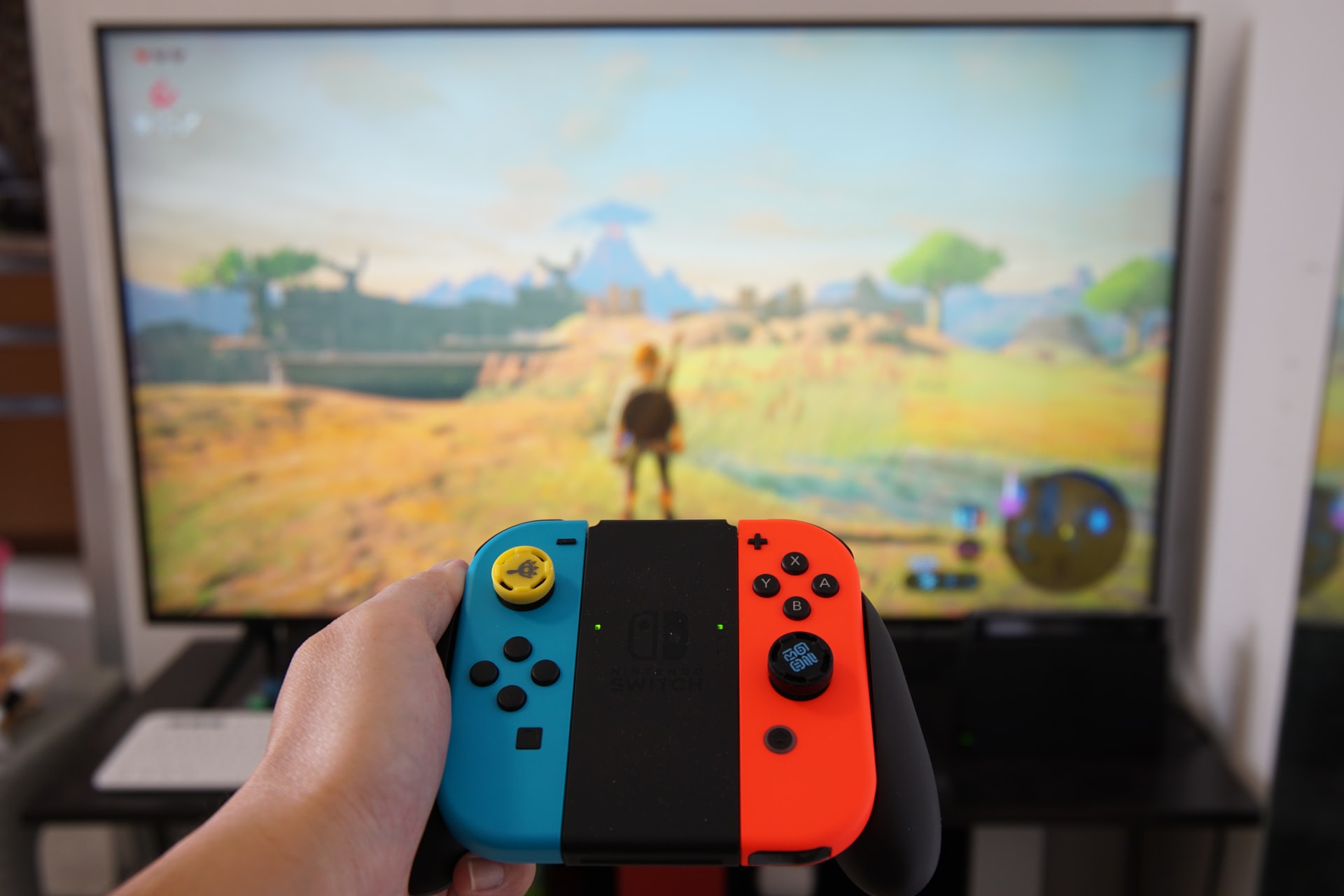Every app aspires to be a major hit and go viral, but in a market that is getting more and more saturated, it might be difficult to stand apart. However, Pokémon Go appeared out of nowhere and quickly gained popularity. Its sudden rise allowed it to outperform industry heavyweights like Candy Crush, Angry Birds, Tinder, and Twitter.
How is this even possible? How does a brand-new app become such a worldwide phenomenon in a few of weeks? What can be learned from Pokémon Go in terms of app development and app marketing is arguably even more crucial. Let’s look closely at the elements that contributed to its record-breaking success and what we can take away from them in order to respond to these queries. But first, a brief introduction to the app that has attracted millions of users worldwide.
Describe Pokémon Go.
Contrary to common assumption, Pokémon Go is not a direct Nintendo software, even though Nintendo owns a third of both The Pokémon Company and Niantic. Pokémon Go is a free-to-play mobile gaming app created by Niantic, Inc. for The Pokémon Company. As part of a commemoration of the 20th anniversary of the Pokémon brand, which includes multiple videogames, anime series, films, trading cards, and more, it debuted in July 2016 in various phases throughout various nations.
The gameplay of Pokémon Go is deceptively straightforward: by using the GPS and camera of a smartphone, users may find the well-known critters known as Pokémon around actual geographic regions and catch them inside the program. Pokémon Go is the app that popularized augmented reality (AR) technology, which allows it to reflect the in-game creatures in real-world surroundings, while not being the first by a long shot. Another unique aspect of the game is the usage of actual historical sites as either “PokéStops” or “gyms,” where players can battle other players’ Pokémon to claim the territory for one of three in-game teams.
It’s important to note that many of these gameplay elements are shared with Nintendo’s line of role-playing videogames, which have been available since 1996. The main variations are in how the app links these elements to the real world, both through the geographic locations and the previously described use of augmented reality. In essence, Pokémon Go fulfills the brand’s long-standing promise to enable users to “catch ’em all,” except this time users engage with the real world rather than only a virtual one.
 Why has Pokémon Go been such a success?
Why has Pokémon Go been such a success?
Several distinct causes have contributed to Pokémon Go’s popularity surge. Importantly, none of those elements operate independently; rather, they all work in concert to provide a singular experience. Having said that, each of these elements has a crucial lesson for app development and/or app marketing that you must remember while developing your own game-changing app.
1. A novel, unconventional idea that makes sense
As said, Pokémon Go incorporates a number of cutting-edge and creative elements, including augmented reality and geolocation. However, it’s not just the technology that sets it apart; it’s also how this combination makes perfect sense and fits right into the app’s natural flow. To develop a game that capitalizes on a sense of wonder and discovery, however, is simply brilliant as well as wonderfully simple. Using geolocation to enable the app know where you are in the world and then augmented reality to let you interact with virtual things in the real world is imaginative enough. The features aren’t just gimmicks; they make perfect sense for the game that was designed, making for a highly pleasurable experience.
The lesson is to think creatively, but more importantly, make sure that everything fits together. Instead of simply adding innovative new elements to your concept, make sure to incorporate the possibility for creativity and innovation from the beginning.
2. A strong, distinctive brand that the concept works with
The fact that Pokémon Go is not Niantic’s first attempt to incorporate these capabilities into a game app may come as a surprise to most people. Ingress, the game that came before Pokémon Go, has already developed several of the core components, primarily geolocation. The majority of people are probably unaware of it, having rarely attained the same level of popularity. What distinguishes Pokémon Go from it, then?
The brand surrounding it makes a significant difference. Pokémon was already a global powerhouse before the release of this new software, though perhaps not on this scale. But as was already mentioned, this original idea makes great sense for the brand. The core values of the Pokémon brand revolve around discovery, uncovering new mysteries and surprises, sharing, and teamwork. The model of the game perfectly aligns with the essence of the brand, forming an unparalleled combination between the app and brand. The brand “Pokémon” enhances the app, and the game not only feels appropriate for its name but also gains from the hundreds of well-known creatures that have some value to people.
The key takeaway is that you don’t need a multibillion dollar brand to be successful—just an app that fits your brand. Make sure the app you’re developing adheres to the brand’s meaning if it’s based on an existing one. If you’re going to build an app first and then a brand around it, the brand ought to have the same significance as the app you’ve built.
3. Choosing the appropriate technology
We don’t mean the cutting-edge things we’ve previously talked in-depth about when we say “technology.” Instead, we’re discussing the software that drives the app.
As was already noted, there have been a number of Pokémon videogames for the past 20 years, but the most of them were only available on the top-tier Nintendo handheld gaming consoles. However, this time Pokémon expanded to a platform that is considerably more accessible and is already well-known to consumers: cellphones.
Nowadays, nearly everyone owns a smartphone and is familiar with its use. Due of its widespread use, this app might potentially reach millions of individuals across all demographics, as opposed to the relatively narrower target market of a Nintendo system.
More specifically, everyone is already familiar with using a GPS changer and taking images with a smartphone attached to a camera, so users are already accustomed to the app’s basic functions. It helps to have systems that are intuitive or sufficiently comparable to the procedures the ordinary user is already well acquainted with, albeit not every app may profit from having that quality.
The key takeaway is to choose the platform that is best for your idea and your target market. Maybe a responsive website would be a better fit for it? Perhaps the best way to use it is through an app. The best option might be a mix of the two. For the optimal user experience, bear in mind to keep the concept straightforward and clear; build off of the user’s past experience and expertise.
4. The appropriate target audience and timing
The kids who first played Pokémon are now in their 20s or 30s, who, not so coincidentally, are a demographic that largely relies on smartphone usage. This is partly related to the preceding point concerning the appropriate platform. Additionally, they are the ideal age to reflect fondly on their youth, when Pokémon first reached its zenith of popularity.
Because nostalgia is such a potent motivator, marketing initiatives frequently rely on it. Pokémon is no exception; as was already mentioned, it’s the 20th anniversary of the game’s initial Japanese release. Seeing it again now brings back all those strong, enduring memories and emotions for a huge portion of the population for whom it was a crucial part of their formative years, making them even more vulnerable to the app.
In a sense, Pokémon Go is the fulfillment of a promise made to kids in the 1990s. They had fantasies of going on adventures, finding Pokémon, and catching them all back then. They can achieve that today by utilizing their main technological tool. This realization is what makes Pokémon Go so contagious for this group of people, who in turn spread it like wildfire to other groups of people who are anxious to know what all the hype is about.
The key takeaway is to thoroughly understand your target market. If you advertise your app to the wrong audience, it won’t succeed; if you promote it perfectly to the correct audience, it could take off like wildfire. To ensure you have the appropriate mindset from the beginning, be sure to extensively concentrate on app promotion even before you begin production.
 5. Features that are addictive and make you not want to stop
5. Features that are addictive and make you not want to stop
We’ve talked about “free-to-play” before. Gaming’s version of freemium, or an app that is initially fully free to use but contains more sophisticated features that you must pay for, is called free-to-play. In this case, your profit comes from the app’s continuing use, especially by power users who are more familiar with it and/or who require it more.
At first, the term “freemium” may seem paradoxical. After all, why take the chance of making my program completely free? What if people are able to use it very well without spending any money? -, but Pokémon Go also has another highly potent force at work that has made it extremely profitable up to this point: gamification.
In essence, gamification refers to the idea of integrating game-like aspects and features into contexts that aren’t typically associated with play in order to increase user engagement and, as a result, repeatability. You might assume that it’s obvious how Pokémon Go accomplishes this; after all, the GPS and, to some extent, the camera are features not typically associated with games that have perfectly translated, and Pokémon’s own collectability aspect is pure gamification. However, there’s more to it than that. And that is how it generates revenue.
There are some components in Pokémon Go that require payment to access. Some incredibly useful things require payment; others are easily obtained at the aforementioned PokéStops; but, if you don’t want the inconvenience of physically traveling there or require more of them right away, you can purchase them instead. In addition, since Pokémon Go is so gamified that it’s almost addicting, a significant portion of users will rely on these paid ways even though none of these components are necessary to play the game. As a result, they grow their user base by making it free to everyone rather than restricting it from the start with a paid app. They then make the basic gameplay so compelling that many players will gladly spend money to advance in the game and enjoy it even more.
But keep in mind, gamification applies to more than simply video game environments. You might be surprised to learn how strongly gamified social media is. The number of friends or followers you have is a metric that lets you know whether you are “winning” against others, thus it does have a scoring system. Additionally, gamification techniques may be added to any platform or program, including B2B applications. These techniques are sure to make using them incredibly compelling on their own.
The takeaways are to utilize the proper payment method for your app and to make it fun for users by including game-like elements. Even an app that appears to be free can be very profitable if optional add-ons are used effectively.
6. A strong social component
The social aspect of Pokémon Go, as well as the success of many other popular platforms and apps, is a concluding factor. The game itself provides many incentives to interact with others: it lacks in-depth tutorials, forcing players to seek out one another for answers and advice; it encourages comparing collections to gauge your progress in comparison to that of others; and it also has features that enable you to work together to obtain significantly more Pokémon collectively than you would alone. With the addition of gyms and the division of players into teams, it also has a competitive streak, which adds another unique feature to the game that enables you to feel satisfied by it.
Social is undoubtedly a key component of everything today. We’re all connected, whether it’s through social media or the Internet itself, and Pokémon Go succeeds by taking that need for social engagement — or fear of missing out — and putting it back to the streets and outdoors, encouraging users to discover more about their own cities. Basically, it gives you a social experience that not even the most well-known social networks can.
The lesson is to not discount the social component because it is so important. Even if you’re developing a business-to-business software, the user’s interaction with the developer community, other users, and even other users makes all the difference. To increase the usefulness and longevity of your app, be sure to think about and employ social tools.
As a result,
As we’ve seen, there are six key aspects that contribute to Pokémon Go’s success, a potent mix that may appear random but isn’t. Together, development, design, and marketing cooperate to produce something fresh, engaging, and timely—lessons we ourselves have previously applied to our own immensely popular eQubes game software. And if you want to achieve that degree of success, copying Pokémon Go won’t help you get there. Instead, construct your own original idea using the lessons it has learned. You can do it if Pikachu can, too.



